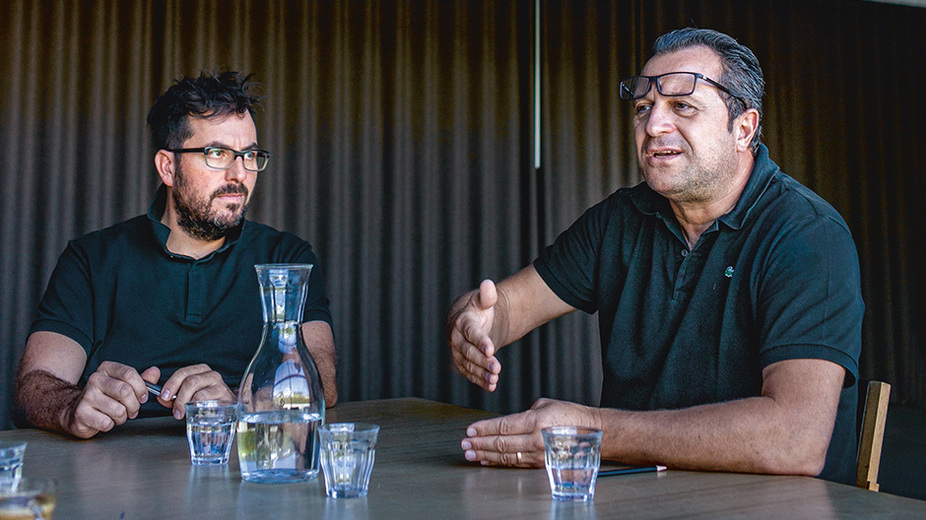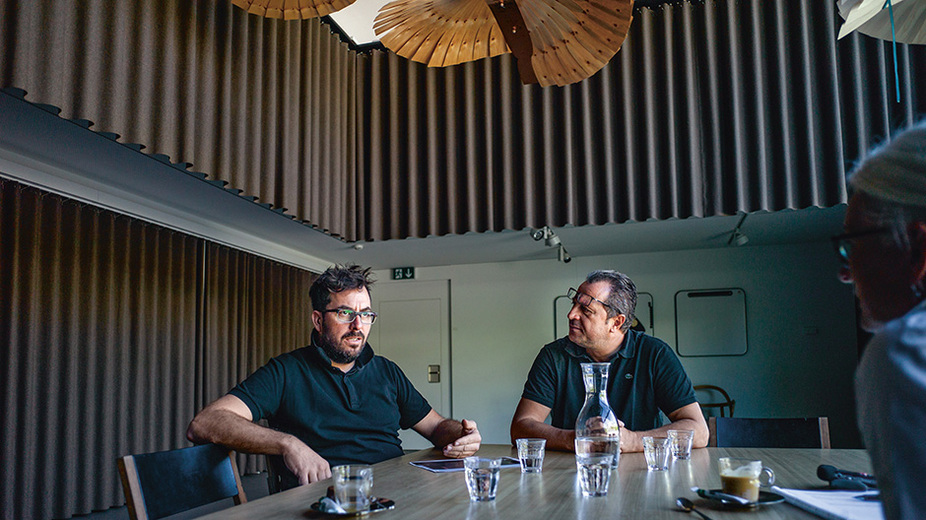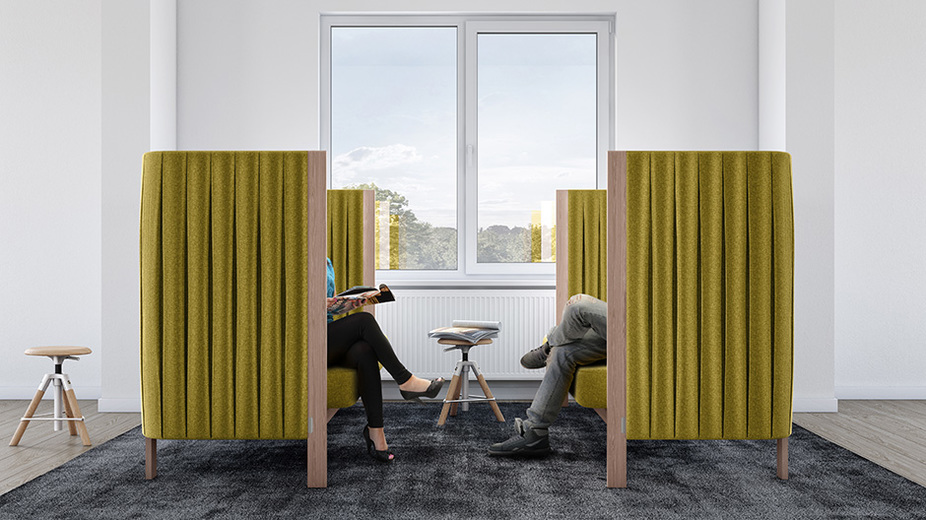"We think with our hands and find the solutions in dealing with materials."
"We think with our hands and find the solutions in dealing with materials."

Thanks to technical achievements, new work philosophies and corporate cultures, we are now very mobile in our choice of work location. This reality requires a whole new definition of the office, which can be anywhere. Especially the so-called knowledge workers are leading the virtuosos of lived self-determination when it comes to working in a home office, on the train, in a café or even in the office. But even within an organization and structural unit, workspaces are increasingly being thought of and implemented in a more process- and project-oriented way.
Concentrated work, meetings, presentations, informal encounters or team-based project work require a wide variety of spatial conditions and suitable furniture. On the occasion of the collaboration on the lounge furniture Velum, the press officer of the furniture manufacturer Girsberger, Dorothea Scheidl-Nennemann, spoke with Aurel Aebi and Reto Ulrich from the Swiss studio Oï. Based in a former sixties motel, the work of this transdisciplinary firm is in the fields of architecture, interior design, interior and product design.
In your opinion, what criteria must an office fulfill today under the aspect of "Cosy Office"? Aurel Aebi: Until now, there was the general view that rooms had to be multifunctional. Today, we assume that there must be different zones that meet different requirements. In the morning, you think about what activity you're going to do and then choose the ideal environment for it. Co-working, co-living ..., all these notions move between the physical and the digital. One also moves between working and living. In the next ten years, a lot will be about this in-between, because in many professions, people haven't quite arrived at the digital yet. Today, we are at the interface along the lines of "Are you still working or are you already living?" So it's also a question of whether I still need to go to the office or can work from home. Basically, the more you work on the computer, the more you long for a soft environment. Therefore, it plays a big role what gestures rooms and furniture such as a lounge express.

Model for a new office structure: the room where the interview took place serves at Atelier Oï as a presentation room, photo studio, for meetings and work discussions. Photo: André Bolliger
Your office is a creative think tank that combines intellectual and craft know-how. What principles do you implement in office design? Reto Ulrich: Especially when it comes to creative exchange, you feel freer in an atmosphere that doesn't scream office. Feeling good is important here, so that one is efficient. But there are also activities that require a different environment and different room characteristics to ensure pleasant collaboration.
AA: There is a saying: "Once upon a time there was a picket fence with space in between to look through. An architect, seeing this, took out the space in between and built a house out of it." We, however, show that something can also be created from the interstitial space itself. Our workstations, for example, are in rooms, the former motel rooms, where we can work in a concentrated way on the one hand, but which are open to the corridor and allow a view. On the opposite side of the aisle, we have each created niches in the façade in which material samples, details or even finished products are displayed. Thus, on the one hand, the storage space is removed from the immediate workplace, but on the other hand, it always offers opportunities for participation and discussion - it functions like a shop window that everyone can pass by.
Are there concepts and spatial problem solutions from Atelier Oï that you would also find interesting to transfer as a model to other office structures? RU: From my point of view as an employee, it is precisely this large space that we find ourselves in. This is where the achieved work steps of a design process are discussed together - this is where we receive immediate feedback from our colleagues. The exchange works quite naturally, because next door is our break room and everyone also looks in here, tries things out, has an opinion. If a company promotes an open culture of discussion, this is an essential prerequisite for the New Office. After all, a fancy lounge and some nice furniture constellations or other gimmicks alone cannot force random conversations. It must also be exemplified and cultivated.

Between living and working. Velum Visavis, visualization
You designed the "Velum" business lounge for Girsberger last fall. What did the briefing look like? AA: The briefing was relatively open. When we were looking for the central theme, we decided on a quiet approach that didn't scream. After all, it's about offering protection and security. In Japan they say: four supports define a space. It doesn't need more. So you can also imagine that a defined corner can open up a space. You have to plan the empty more than the full. It is about the approach of "in field" and "environment". Is something only its own part itself or does it contain spatial aspects. Here in the big room of the studio, for example, we have these curtains that are held and lined up as if by some kind of big paper clip. This creates a regular architectural undulation - almost with the appearance of a corrugated sheet. Here, with a simple drape, "half space, half furniture" is created. This is exciting for us because it gives the material a certain freedom.
How can the essence of your design approach be summarized?AA: We think with our hands and find the solutions in dealing with the materials - by feeling, trying things out and experimental models. Our Matériauthèque in the basement is very valuable here, a material library in which we archive around 20,000 very different materials. Often we have a material idea before the form idea, and a form emerges from the material. So we approach it like a chef. If we want to make something better, we change the ingredients. That's exactly how we work. If the material doesn't want to go along with something, it expresses that. In model making, we make one-to-one models in order to check the spatial conditions exactly, often we also fall back on archived ideas and approaches from the past, which make sense again in a completely different context in a transformed way.
The idea of how work will be done in the future is certainly informed by Girsberger and has been incorporated into the design. Velum was created in a kind of co-creation. At Atelier Oï, we are not a one-man show either. Many give their best together in the creation process. So we also welcome it when experienced experts and designers give clear input during the process, as they do at Girsberger.

Girsberger
The Swiss group of companies was founded in 1889 as a turnery and soon developed into a renowned seating furniture manufacturer. Today, the focus of the product range is on high-quality and innovative furniture solutions for the office, contract and residential sectors, as well as special processing expertise in the solid wood segment.
Everything You Need To Know About 12 Mm Laminate Flooring
Comments
Post a Comment